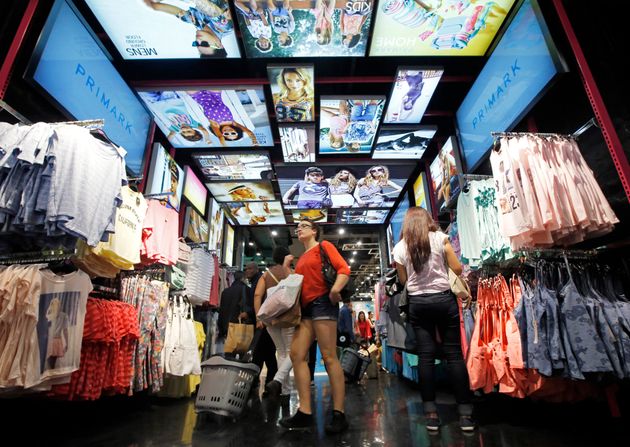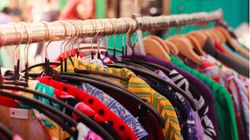
Parents can and should be engaging children on the perils of fast fashion from as young as two years old because they need to form good habits before coming under the influence of brands, celebrities and their peers.
Clothing is one way that young people begin to define themselves. My daughter has chosen what she wears from the age of two and it has resulted in some wonderfully peculiar combinations. Allowing your child to experiment with different colours, textures, fabrics and styles teaches them that clothes are like ice-cream flavours; there’s no right or wrong choice and it’s all a matter of taste. Steel your child to resist fashion trends by encouraging them to find their own style early on.
I have a professional background in sustainability but I’m no educator so I wasn’t sure where to start when talking to my four-year-old about the impacts of the fashion industry. I gathered together some rags and a trowel and we headed out to the garden. To get my daughter thinking about what happens to our clothes at the end of their short lives, we buried a sample of cotton, wool and polyester in the garden so she could see what the worms would and wouldn’t eat; what does and doesn’t ‘go away’. We planted little flags with dates on to remind us of where we hid them and dug everything up again after about six weeks. It’s amazing to see how quickly the soil’s microorganisms get to work.
Natural materials of course aren’t unequivocally fabulous. The V&A’s ‘Fashioned from Nature’ exhibition vividly showed you that. A feast for the eyes but a veritable onslaught for the conscience. Fur and feathers aside, there was a dress covered in iridescent jewel beetle wing cases and a pair of red-legged honeycreeper bird head earrings. Yes, their actual heads! My daughter was riveted.
So I blindfolded my four-year old and played a guessing game. I gave her a piece of cotton, polyester, wool and… a banana skin. Why? Because one guy in America is turning food waste into clothing. This teaches the importance of innovation – of always thinking of how to improve on how we do things.
Talking to your child about who made your clothes is as important as questioning what they are made from. We have a fairly-traded basket in the house with a label on it depicting the individual who crafted it. Unprompted, my daughter asked if that was who made the basket. I’ve left the tag on.
Clothes labels don’t have such visual indicators of their origins. Get your child to pick out a favourite outfit and look at the label to tell them where it was made. Explain to them that children, as well as adults, often work very long hours to make our clothes and they get very hot, tired and hungry. Ask your child to write or dictate a letter to one of these children – does your child think they might find the work hard? Would they rather be playing or going to school? What would they like about your child’s home or school?
It’s also really important simply to limit what comes into your house because so much of what goes out for resale or recycling may well be landfilled or incinerated. Have a one-out, one-in system. Get your child used to second-hand clothes so there’s no yuk factor later on and take them charity shopping to normalise this. Pre-loved hand-me-downs are a great opportunity to talk about a specific child who used to have fun in the clothes, as are clothes swaps with friends.
Teach moderation not abundance by storing out of season clothing elsewhere, neatly folding everything so your child can see just how much they’ve got, and periodically ask your child if they would like to give a jumper, dress or pair of trousers to a child who doesn’t have as many clothes as they do. They might keep saying no, but keep asking!
Repair damaged clothes by making fun patches together for trousers with holes at the knees and sewing loose hems or torn seams. Repurpose lost-cause items into wipes, cloths, book covers, bags.
And above all lead by example. With every purchase you make, with every round of decluttering, repairing and repurposing you embark on, tell your child what you’re doing and why it’s important. Parents are the most influential role models children have in their young lives and the good news is that parents don’t need to be environmentalists, activists or educators to raise their children to consume wisely.
Anya Hart Dyke is a Mum of two living in Fife, Scotland. She is currently crowdfunding for her first book ‘Our throwaway culture – raising children to consume wisely’


